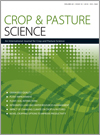CP18321Genetics and mapping of the novel leaf-colour mutant gene yglw-1 on wheat chromosome arm 2BS
 , W. H. Ding, X. D. Chen, G. Li, X. L. Jiang, N. Dong, Y. J. Xiao, C. C. Ren, X. H. Gao and Z. G. Ru
, W. H. Ding, X. D. Chen, G. Li, X. L. Jiang, N. Dong, Y. J. Xiao, C. C. Ren, X. H. Gao and Z. G. Ru
The mapping of genes related to leaf colour mutations could be an efficacious approach to systematically dissect the complicated process associated with the development of leaf colour. The novel leaf colour mutant gene yglw-1 was mapped on wheat chromosome arm 2BS in this study. The results provided in this paper will facilitate map-based cloning of the yglw-1 gene and its application in wheat breeding programmes.




